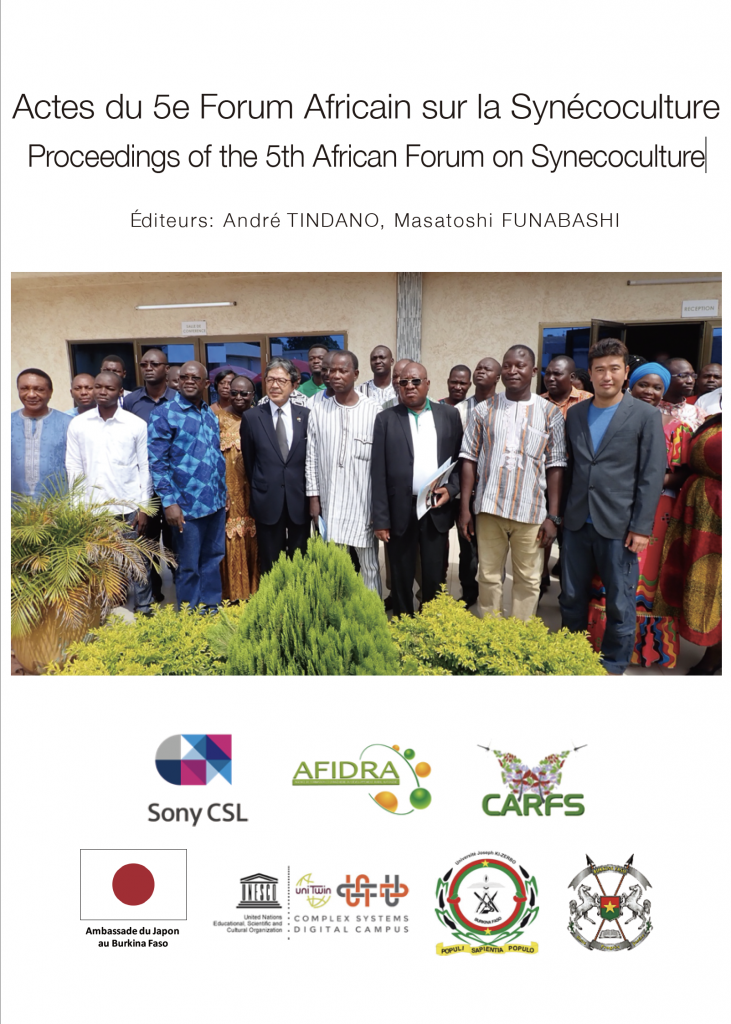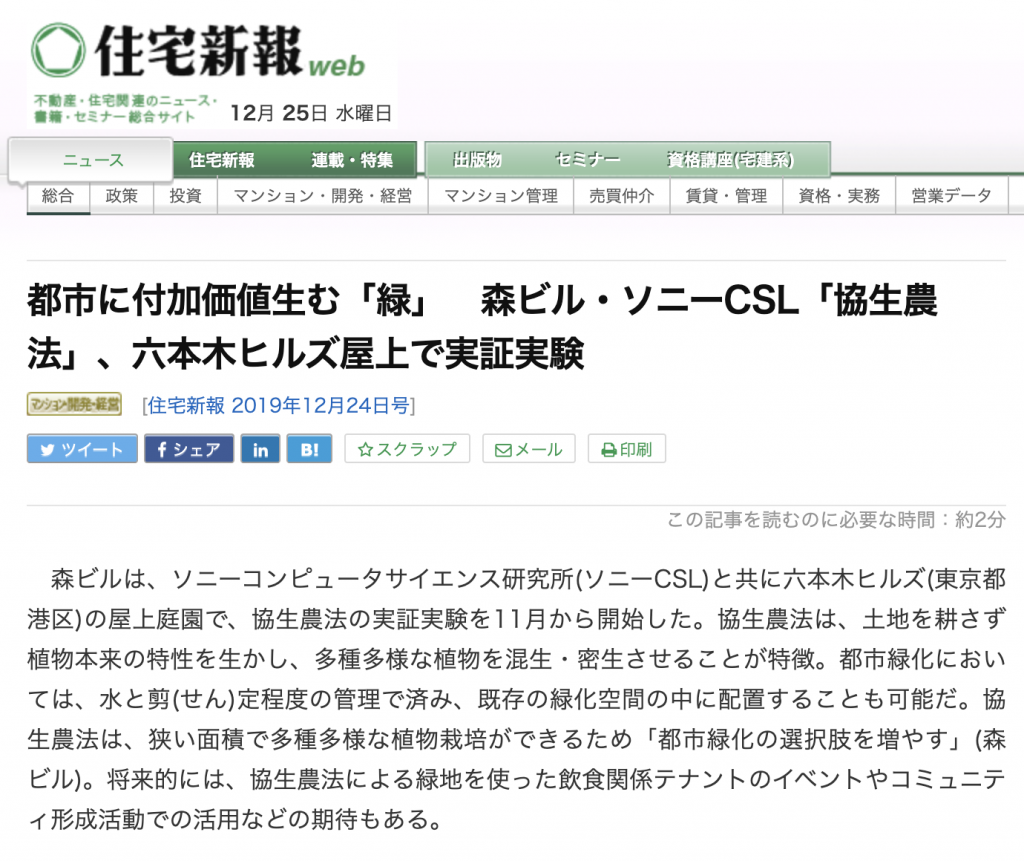船橋真俊が、以下の書籍の一章として『メタ・メタボリズム 宣言』を執筆しました。
『人は明日どう生きるのか――未来像の更新』南條史生 アカデミーヒルズ 編 森美術館 企画協力 NTT出版 発行
Sony CSL を通じて、拡張生態系の考え方を宇宙開発と地球の持続可能性の双方に貢献するアプローチとして研究・実装するために、Space Food X に参入しました。

Proceedings of the 5th African Forum on Synecoculture has been published.

2019年12月24日付けで、住宅新報に森ビルの屋上庭園で行っている協生農法の実証実験に関する記事が掲載されました。
都市に付加価値生む「緑」 森ビル・ソニーCSL「協生農法」、六本木ヒルズ屋上で実証実験 (有料記事)

Tokyo, Japan – Sony Computer Science Laboratories, Inc. (“Sony CSL,” President and CEO: Hiroaki Kitano) announced that, beginning from November 2019, it will launch an urban Synecoculture proof of concept trial at the rooftop gardens at Roppongi Hills run by Mori Building Co., Ltd. (“Mori Building,” President and CEO Shingo Tsuji).

株式会社ソニーコンピュータサイエンス研究所(本社:東京都品川区・代表取締役社長 北野宏明、以下ソニーCSL)は、森ビル株式会社(本社:東京都港区・代表取締役社長 辻慎吾、以下森ビル)が運営する六本木ヒルズの屋上庭園を舞台に、2019年11月より都市空間における協生農法に関する実証実験を開始しました。
舩橋真俊が、2019/11/14-15に開催された Kick-OFF symposium launching of UC Davis-Osaka U collaborative projects と Conference “Harnessing the Power of Biotechnology for Human and Planetary Health” にて招待講演(Special Lecture)を行いました。
本講演は、大阪大学の学部講義「基幹代謝学II」において教材化されます。



11/19-11/20 六本木アカデミーヒルズで開催される「Innovative City Forum 2019」 (ICF 2019)に舩橋真俊が登壇します。
http://icf.academyhills.com/
■登壇予定
Day 1 (11/19) 14:30-15:30 / 15:45-16:45 分科会1:都市と建築の新陳代謝
https://icf.academyhills.com/program/
